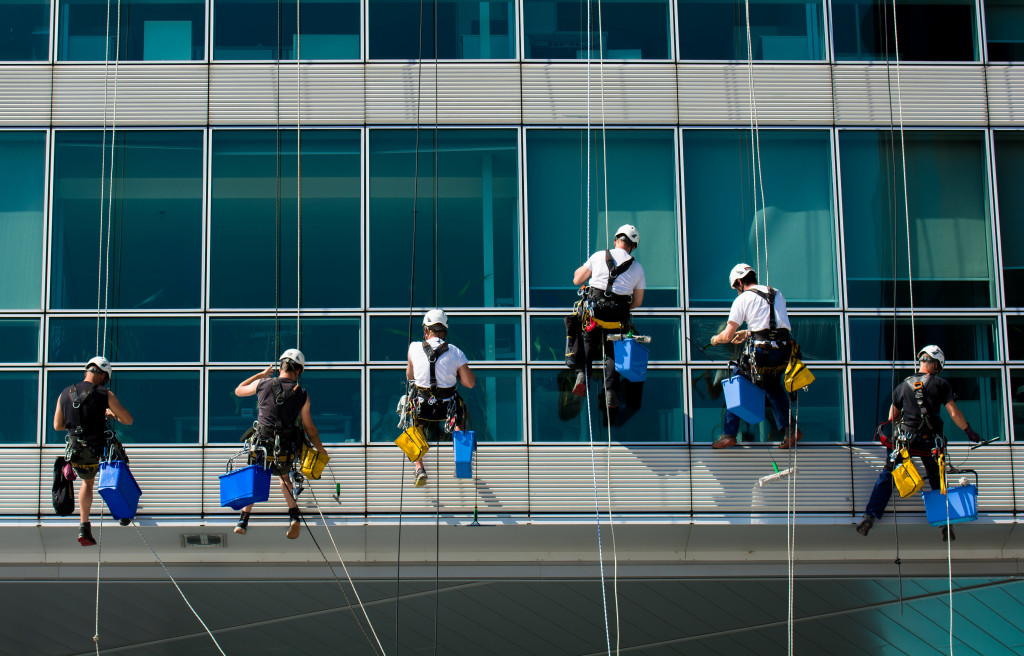Employees in high-risk jobs face several dangers in the workplace. These include exposure to hazardous materials, dangerous equipment, and potentially hostile environments. The potential for injury or mortality is always present, and workers and employers must take extra precautions to ensure their safety.
According to statistics by International Labor Organization, workers’ deaths from work-related accidents and illnesses result in two million fatalities each year. They also said that there are 500-2000 work-related injuries every day. This only shows how important it is for employers to take the necessary steps to protect their employees. Workplace accidents can happen at any time and can have a devastating impact on workers and their families.
In addition to the apparent dangers, high-risk jobs can also affect mental health. The constant stress of being in danger can lead to anxiety and depression. High-risk jobs can be extremely stressful and dangerous, but workers often accept these risks because of their high pay and job satisfaction. As an employer, it’s important to do everything you can to protect your employees and ensure they’re safe while on the job.
Here are some tips on how to protect employees in high-risk jobs:
1. Provide proper training
One of the first things you can do to protect your employees is to provide them with proper training. Businesses should train workers to safely perform their tasks and use any equipment they will be working with. They should also be aware of the potential risks involved in their job and what to do if an accident or injury occurs.
Without proper training, workers are more likely to make mistakes that could lead to accidents or injuries. Ensure you provide your employees with the training they need to stay safe on the job. The last thing you want is for someone to get hurt because they weren’t properly trained.
Your job as the business owner is to ensure you provide a safe work environment; that starts with proper training. It could make the workplace safer and might even save a life.
2. Get insurance
Another way to protect your employees is to get insurance. High-risk jobs often come with a higher risk of injury or fatality, so insurance is important in case something happens. This will help cover any medical bills or funeral expenses if an employee is killed or injured on the job.
For example, owning a firearms shop means that your employees are at a higher risk of being injured by a gun. In this case, it’s important to have insurance to cover the cost of any medical bills or legal expenses. Competitive gun insurance companies will be able to provide you with the coverage you need to protect your business. They can also help you find the best rates to save money on your insurance premiums.
Another example is if you own a construction company. Your employees are at a higher risk of injury while working on a construction site. In this case, you’ll want to get insurance to cover the cost of any medical bills or lost wages if an employee is injured on the job. This way, you can protect your business from financial ruin if someone is hurt while working for you.

3. Inspect equipment regularly
Another way to protect your employees is to inspect equipment regularly. This includes any tools, machinery, or vehicles that your employees use for their job. Inspect these items regularly to ensure they’re in good working condition. Regular inspection includes:
- Checking for wear and tear.
- Ensuring parts are tight and secure.
- Looking for any damage.
This will help to ensure that your employees are using safe equipment while they’re working.
4. Follow safety regulations
Safety regulations are in place to protect workers from accidents and injuries. As an employer, following these regulations is important to create a safe work environment for your employees. Not following safety regulations can put your employees at risk and could even lead to legal penalties.
For example, construction companies must follow the Occupational Safety and Health Administration (OSHA) safety regulations. These regulations are in place to protect workers from being injured on the job. Some safety regulations that construction companies must follow include having proper safety equipment on site, posting warning signs, and providing training to workers.
If you don’t follow safety regulations, you could be putting your employees at risk. Make sure you’re following all the safety regulations that apply to your business to create a safe work environment.
5. Keep communication open
Lastly, it’s important to keep communication open with your employees. This way, they can let you know about any safety concerns. You can also use this communication to update them on safety procedures or changes in the workplace.
Open communication will help ensure that your employees feel comfortable bringing up any safety concerns. It will also help to keep them up-to-date on any changes that could impact their safety.
Employee feedback is important to create a safe work environment. Make sure you’re regularly communicating with your employees about safety concerns. It’s vital so you can address any issues quickly and keep everyone safe on the job.
High-risk jobs require extra precautionary measures to ensure the safety of employees. Following these tips can help protect your employees and give them the peace of mind they need to do their job effectively.



